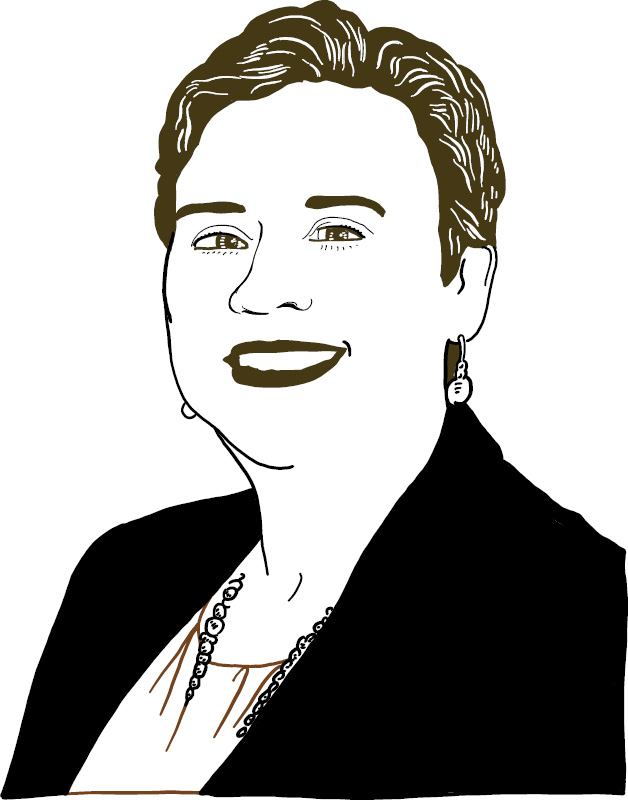Keeping the Doors to
Education Open to All

Every modern college campus has a disability office: a department that works with students with a variety of disabilities to ensure that academics and events are accessible. But SF State’s Disability Programs and Resource Center (DPRC) is special. Earlier this year, it got a new director — Wendy Tobias (B.A. ’01, M.A. ’05) — who knows its work intimately because she accessed its services herself as both an undergraduate and graduate student.
How did DPRC support your education?
I’m legally blind, so when I signed up for DPRC services, I learned about peer mentoring and enrolled in a for-credit class targeting disabled students. The class covered study skills, assertiveness and how to effectively discuss disabilities with professors. This class was key to my success because I knew someone cared about me. I was a peer mentor my sophomore year and was excited to help other students learn about SF State’s support systems.
I was born with cataracts. As a student with nystagmus [a condition that causes the eyes to make repetitive involuntary movements], my DPRC accommodation gave me extra time and larger print for tests as needed and allowed me to write my answers instead of filling in Scantron bubbles. I could also ask for note-taking assistance, which would help me get accurate information from the whiteboard.
During 1975-76, DPRC’s first full academic year, 299 students registered for services. How many does DPRC serve now?
About 1,700 students were served during the 2017-18 academic year. More than 260 SF State employees also received accommodations that supported them in their jobs.
How does your undergraduate experience with DPRC shape your philosophy?
“I resonate with the social justice mission at SF State and DPRC.”
Wendy Tobias, (B.A. ’01, M.A. ’05)
I can more fully understand the student experience at SF State and proactively think about improvements. We’re streamlining how students apply for accommodations, for instance, so they can handle most processes online. We’ve met with campus partners about how to incorporate a more universally designed learning environment for all students as a way to eliminate some of the need for accommodations. This includes everything from room lighting to how lessons are taught in class to how students’ knowledge can be evaluated. Most classrooms will now have a table and chair that can accommodate a student who uses a wheelchair or even a student with chronic back issues who prefers to stand during class. We also offer annual scholarships for visually impaired students, and I would love to set up more.
We aim to treat each student as if he or she could one day be the director of DPRC.
Why did you return to SF State after you received your undergraduate degree?
SF State offered a master’s in rehabilitation counseling plus connections to Bay Area internships. I’d majored in psychology and wanted to help vulnerable populations. After working at the California Department of Rehabilitation for 11 years, I came back because I resonate with the social justice mission at SF State and DPRC.
What are common misconceptions about DPRC and disabilities in general?
One misconception is that it’s difficult to become eligible for DPRC services, or that DPRC only services physical disabilities. Though there is a step students must take to request services via DPRC, our philosophy is to engage students in an interactive process which ultimately provides them with self-determination about when and how they might use their approved accommodations. We also aim to help students reduce stigma around disability by underscoring that people with disabilities are an invaluable addition to society. DPRC services individuals with all types of disabilities — physical, cognitive, psychological and others — and we welcome any student who wants to come talk to us about obtaining full access to SF State.